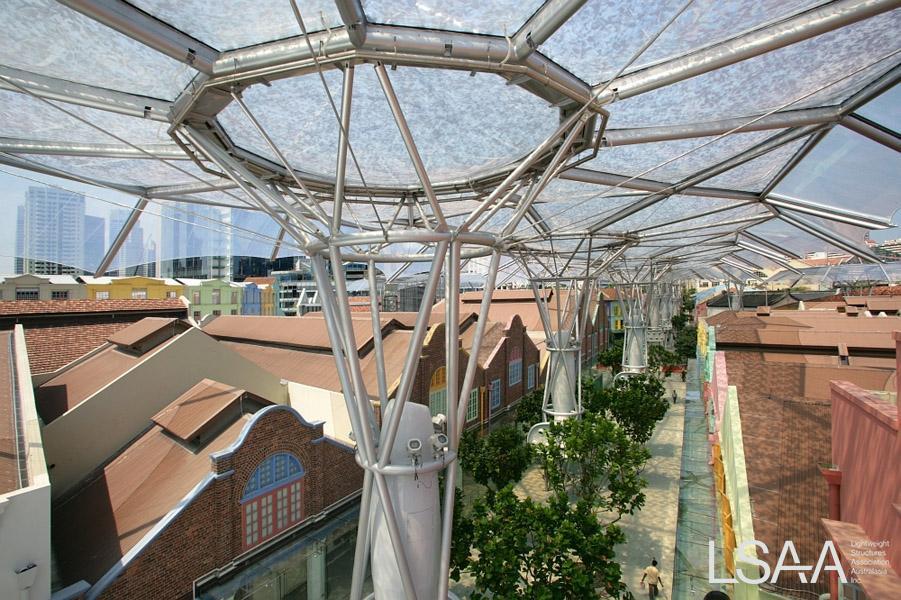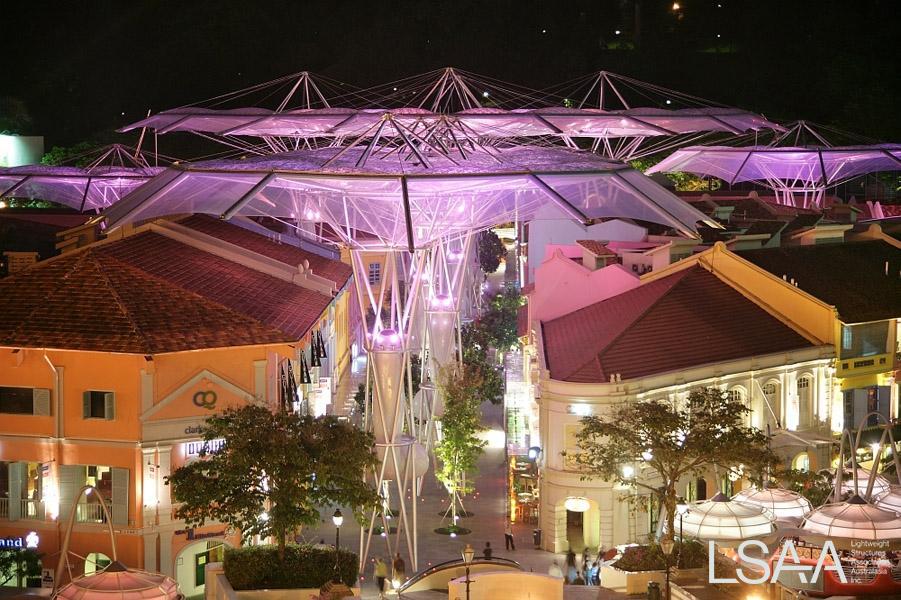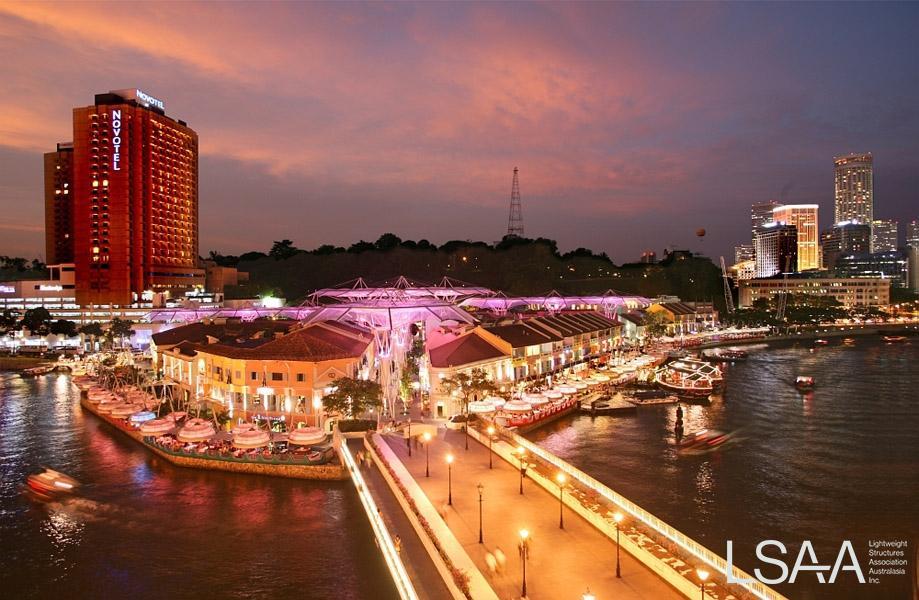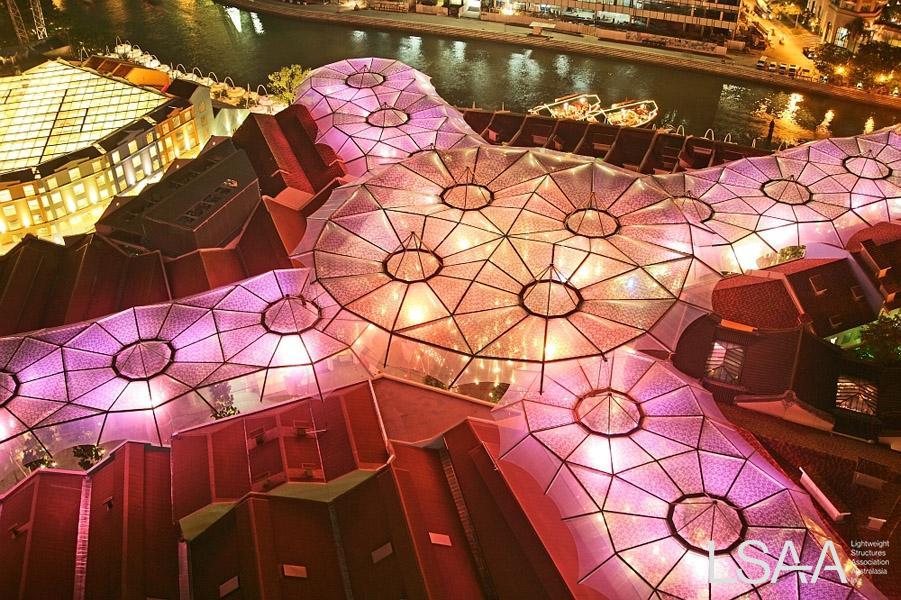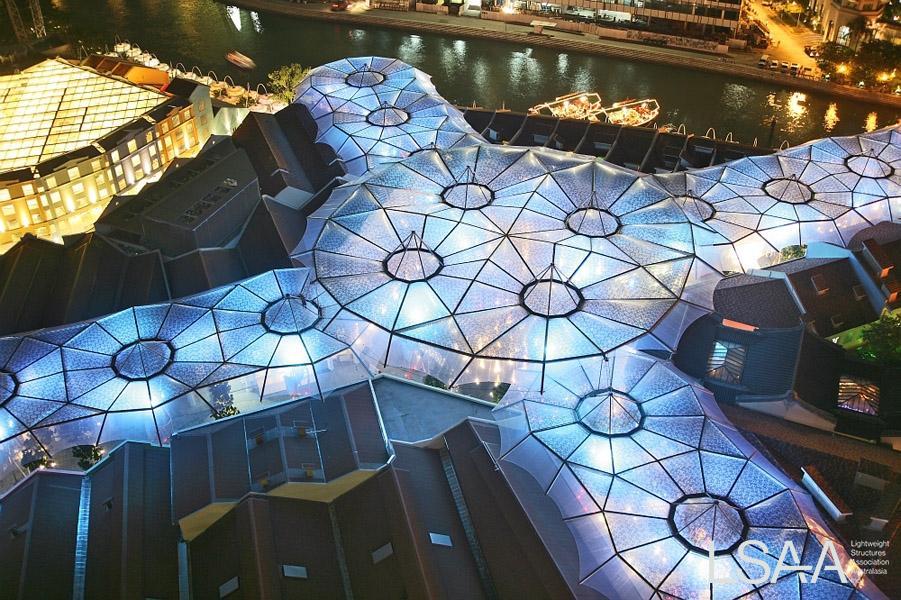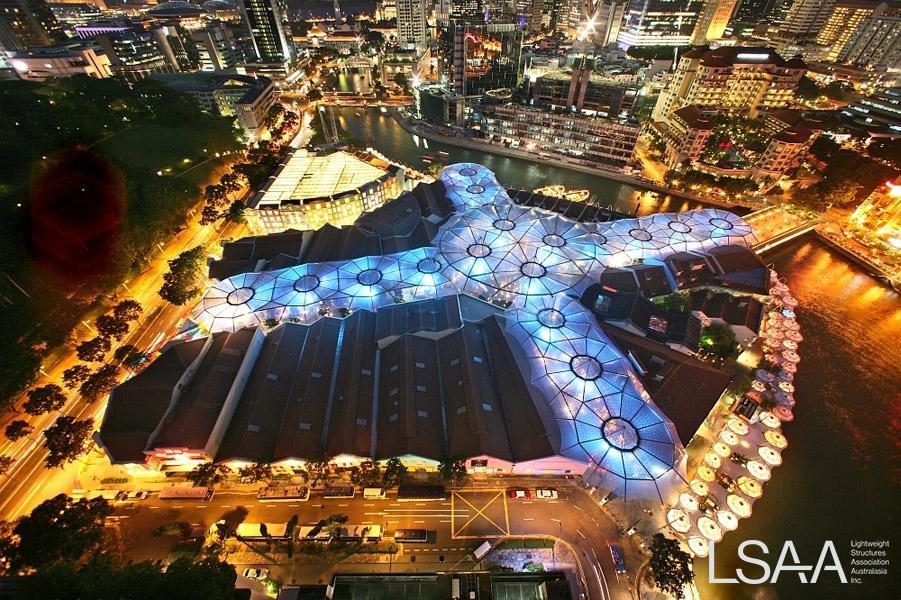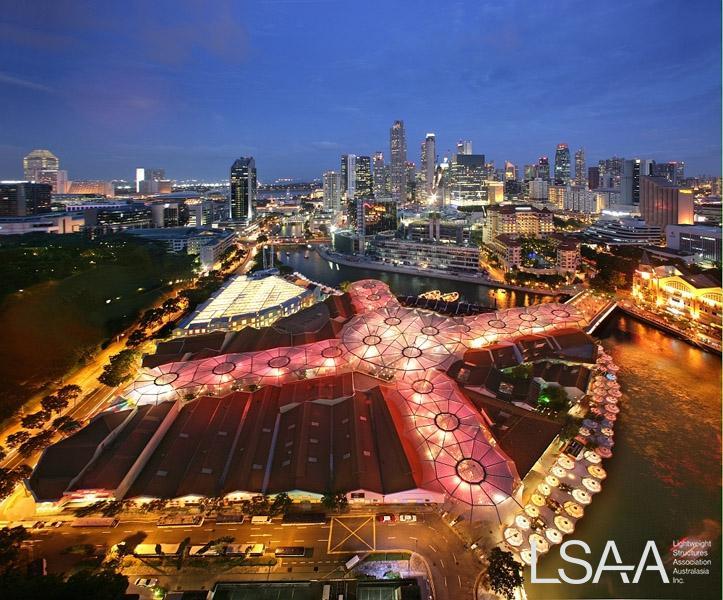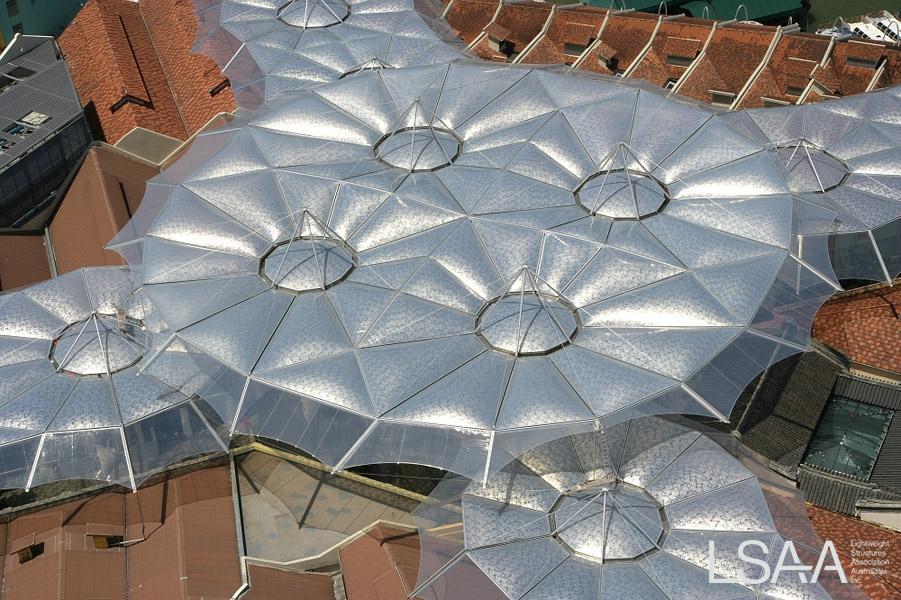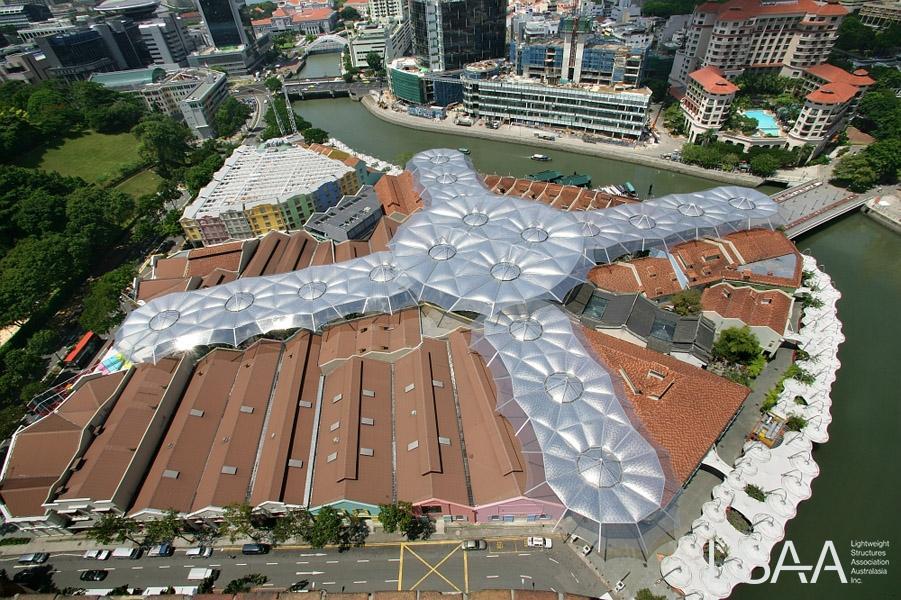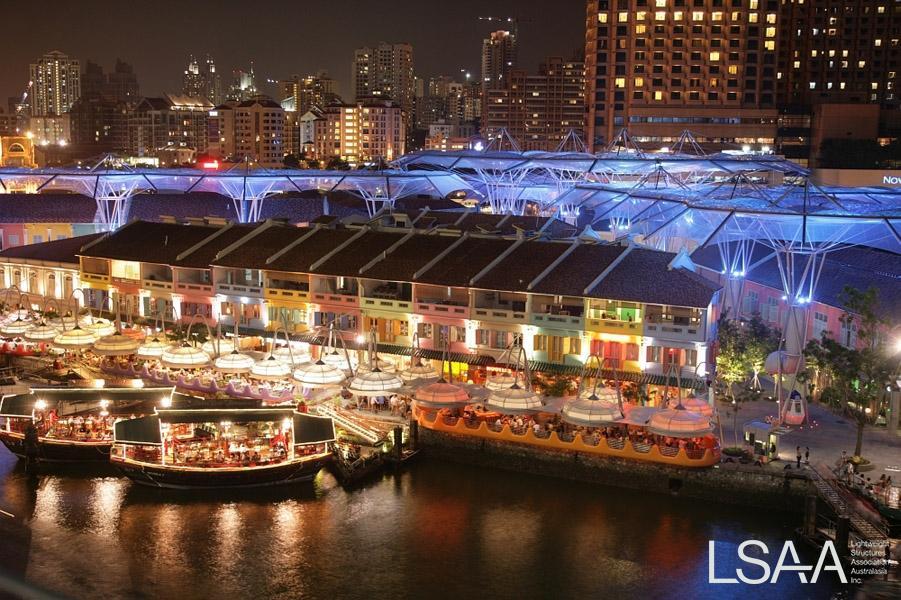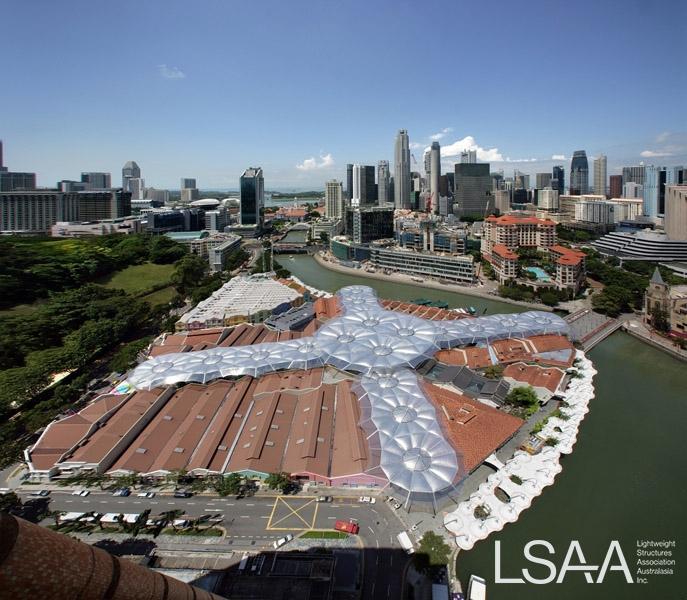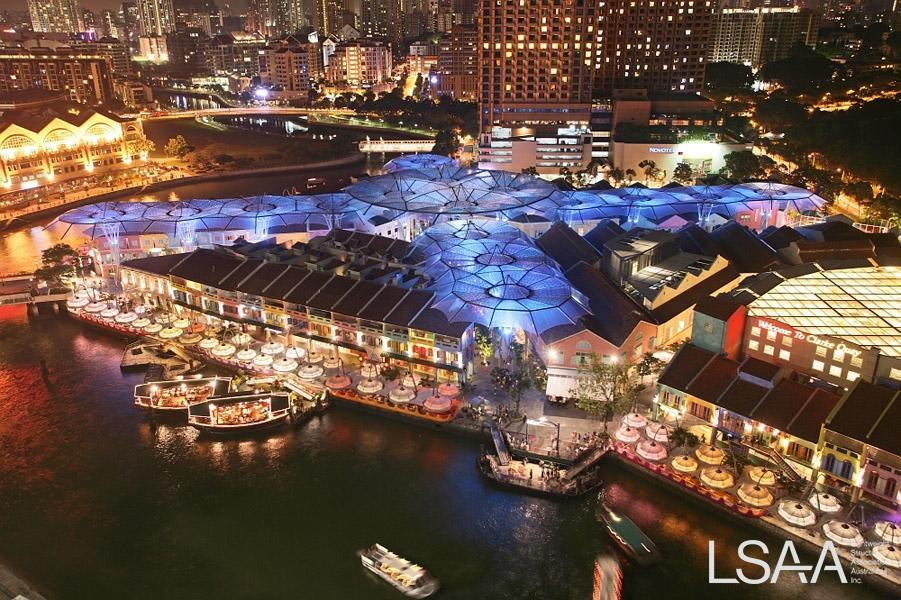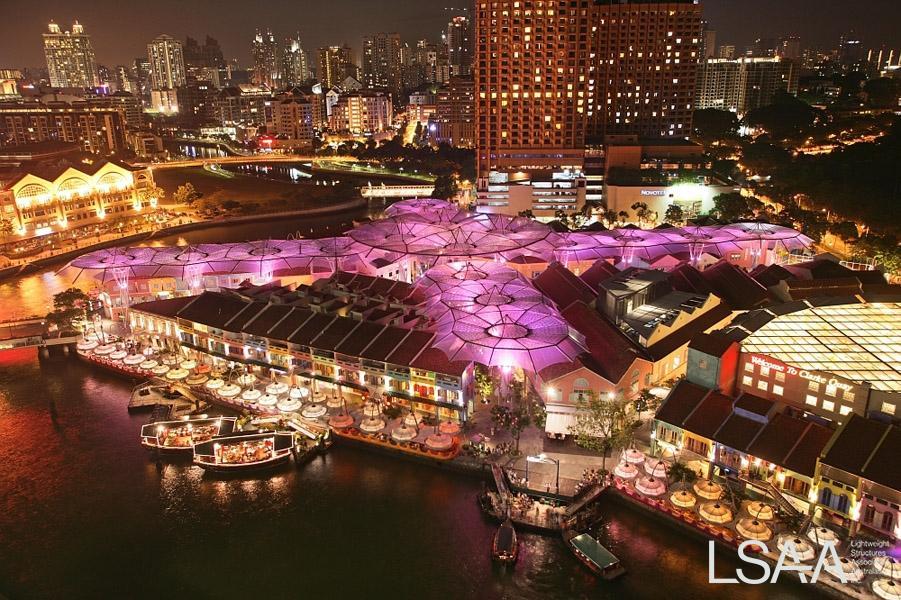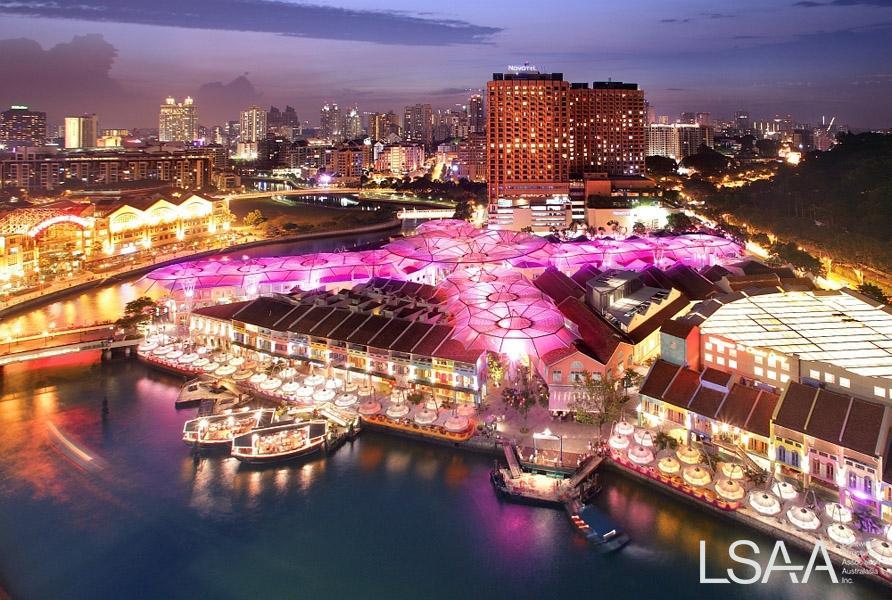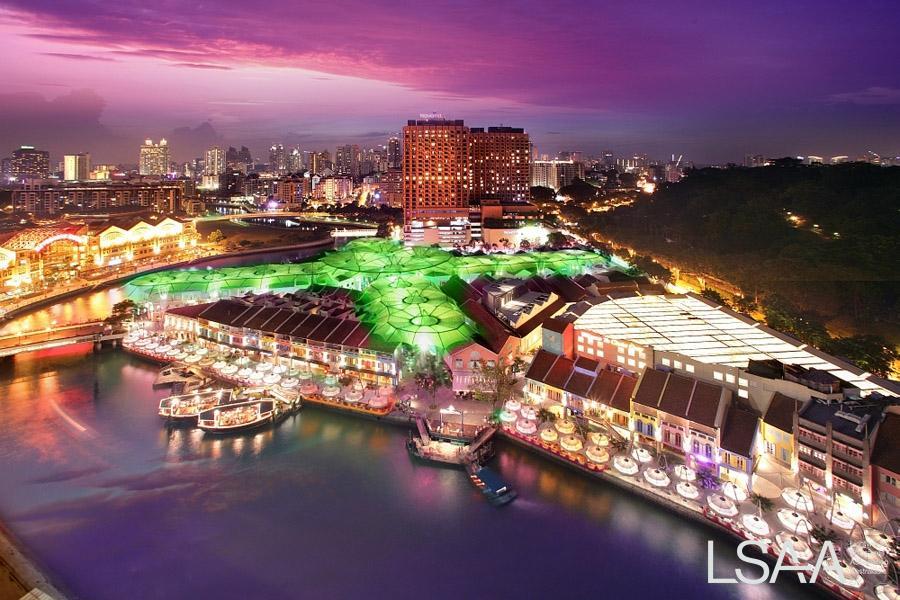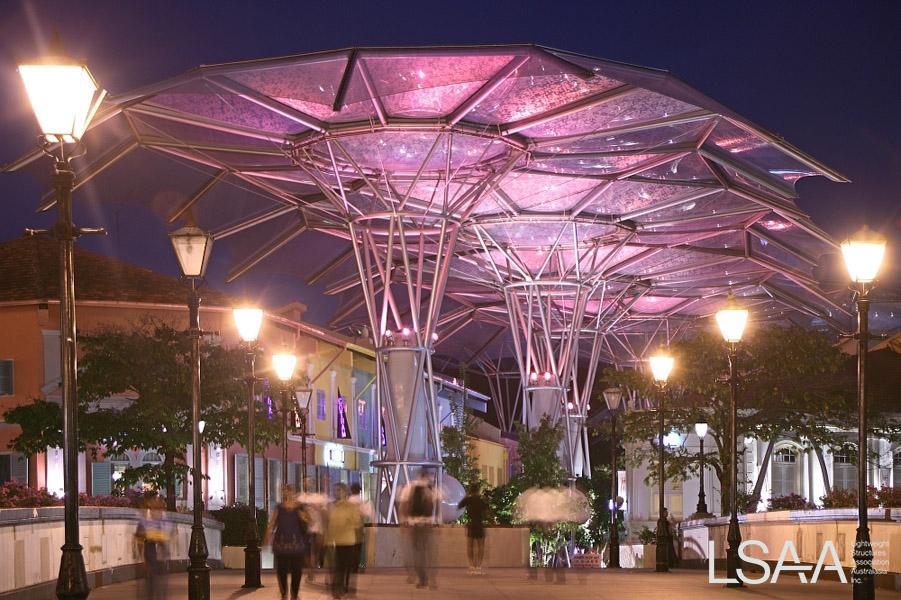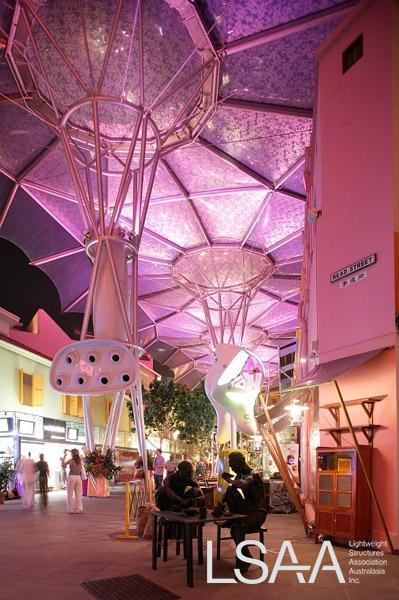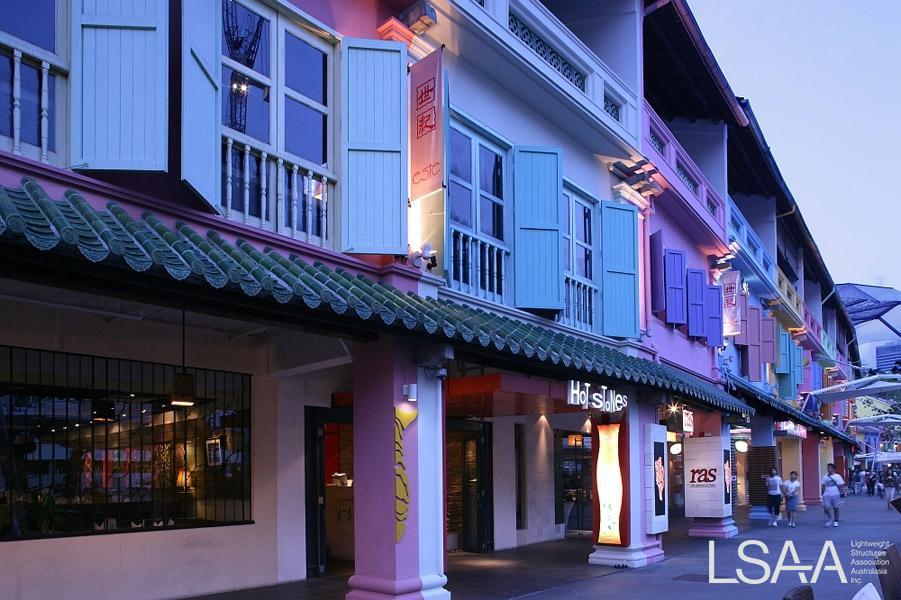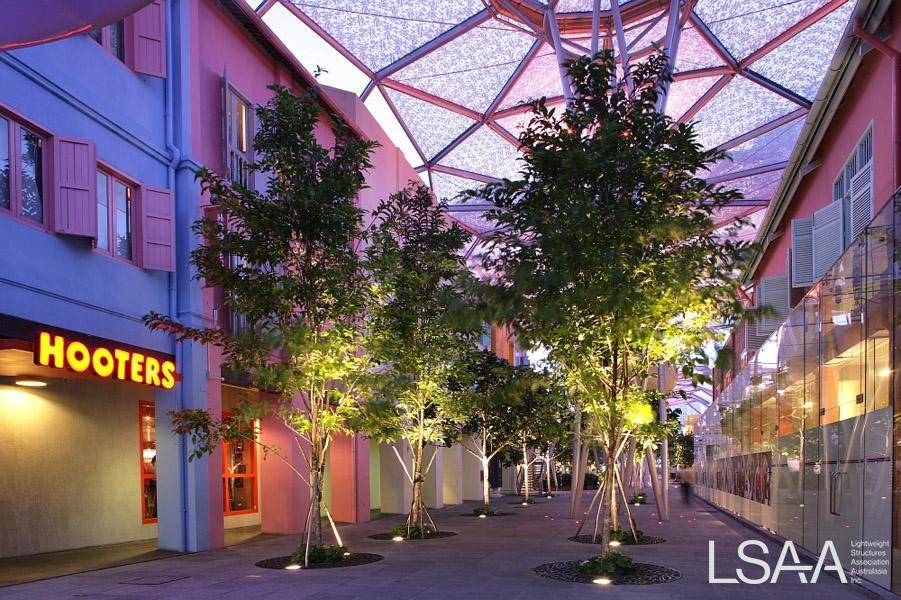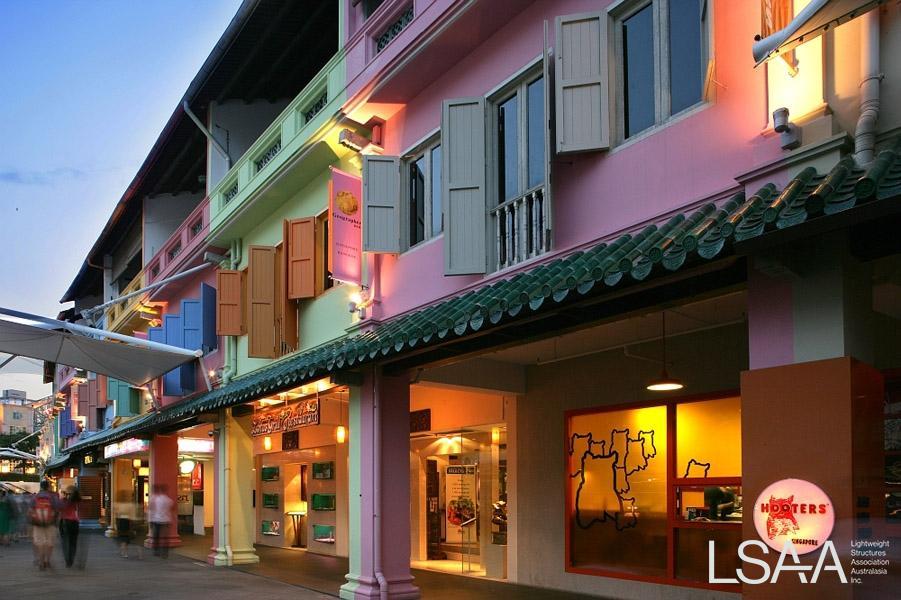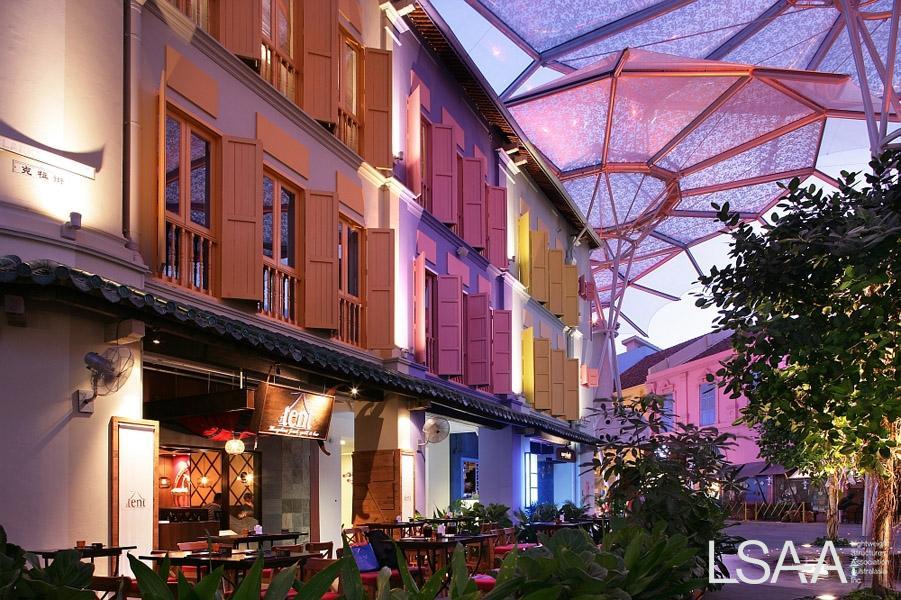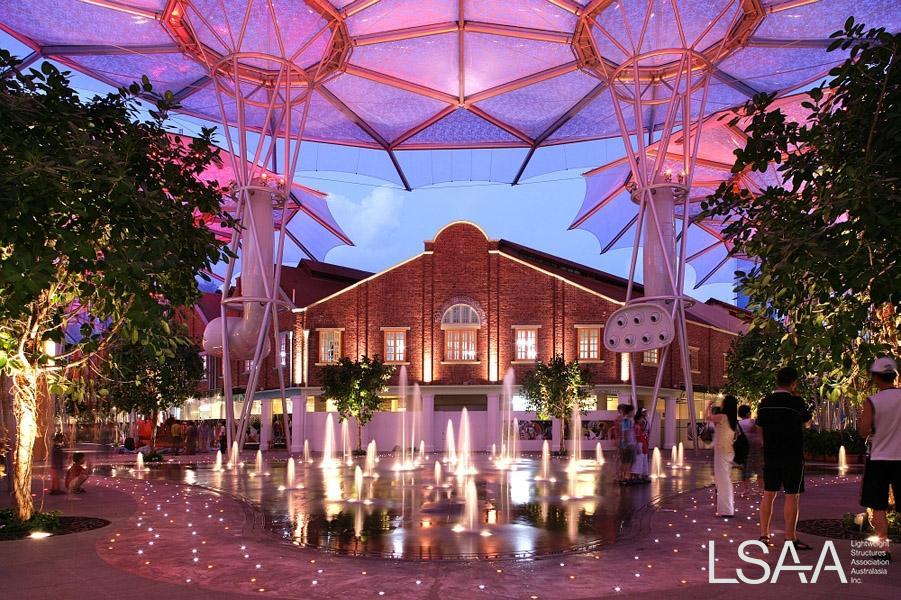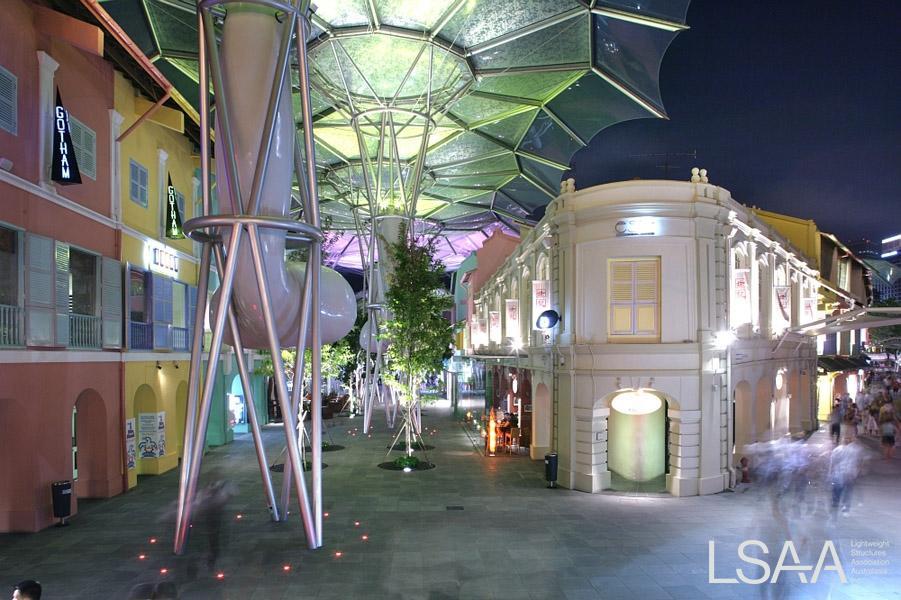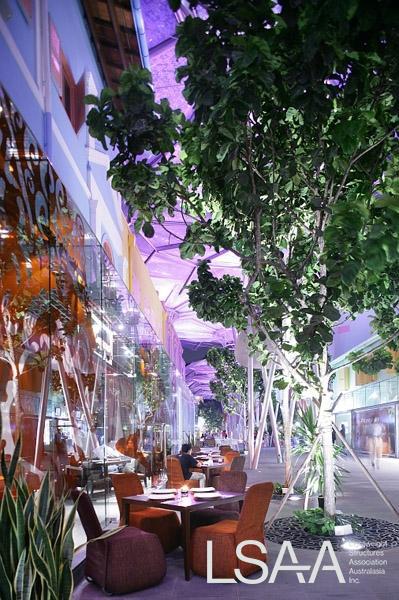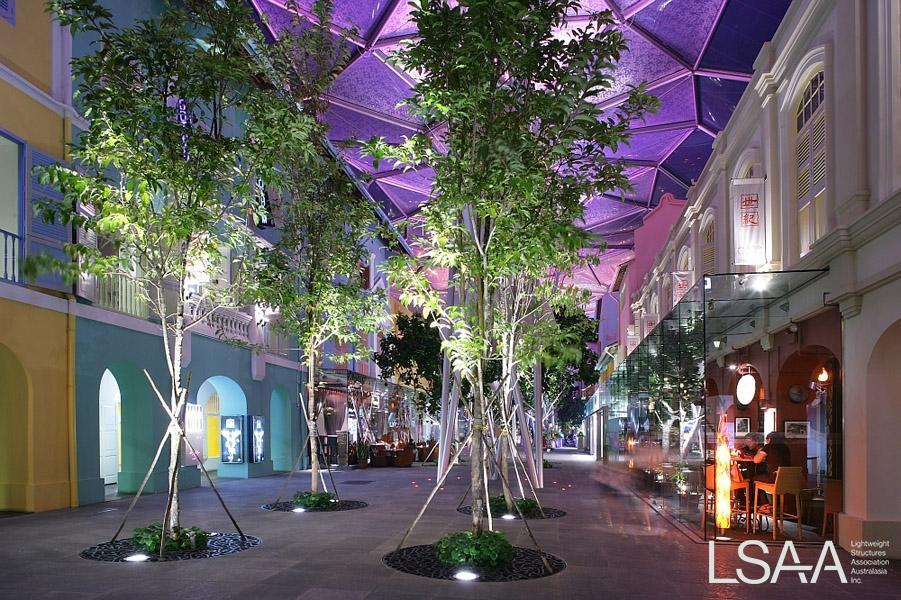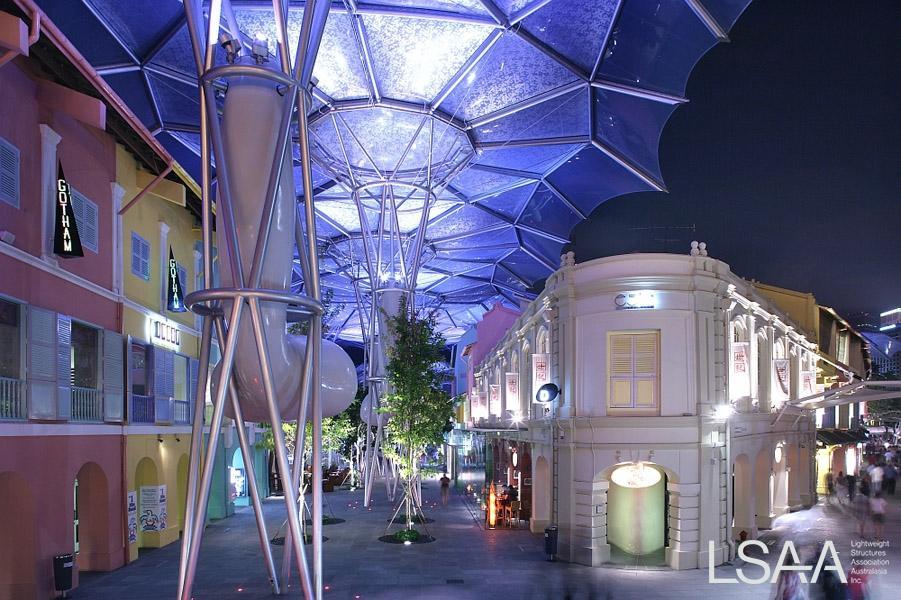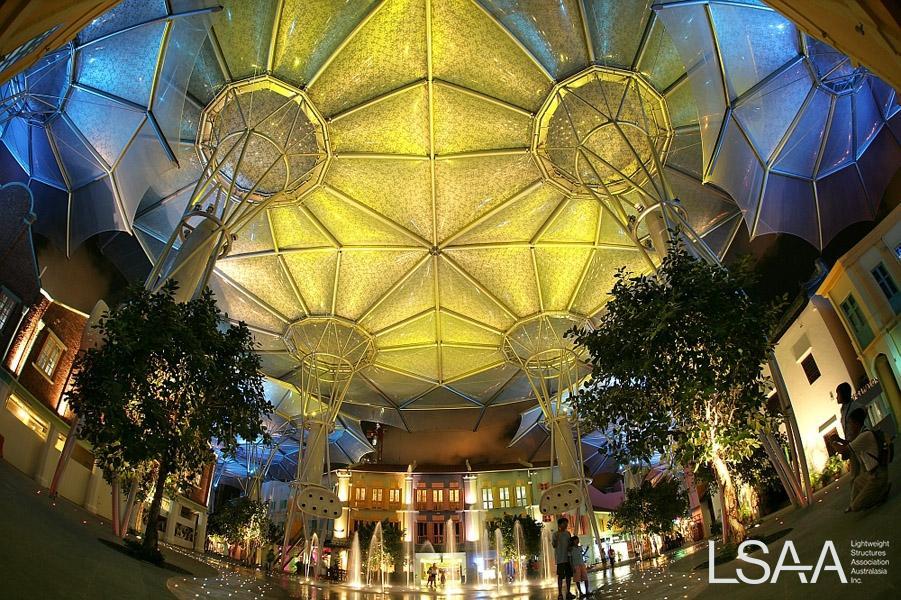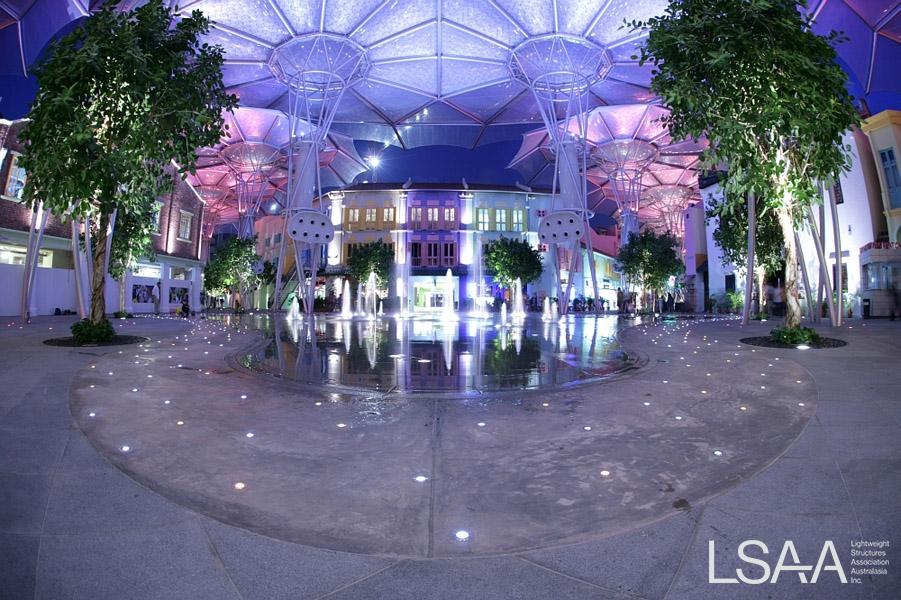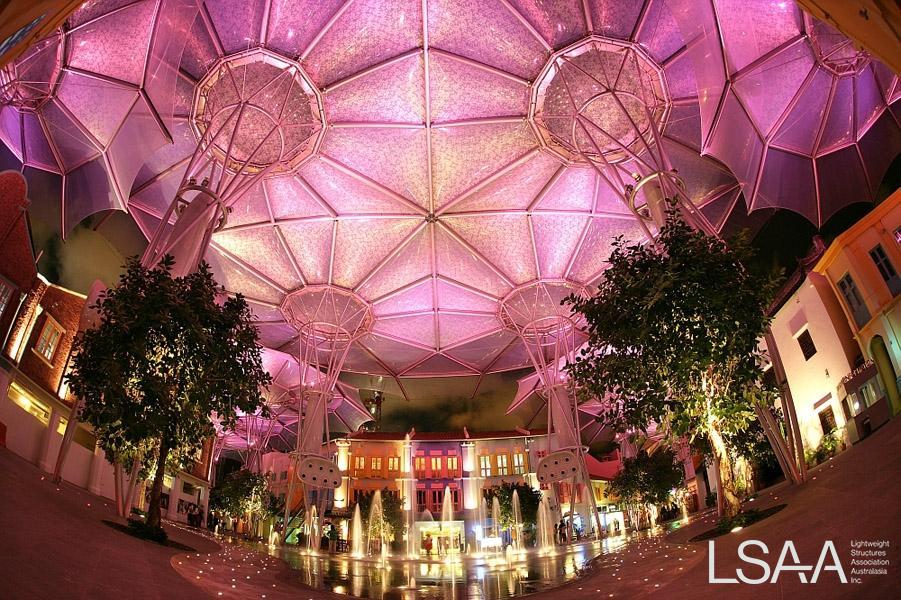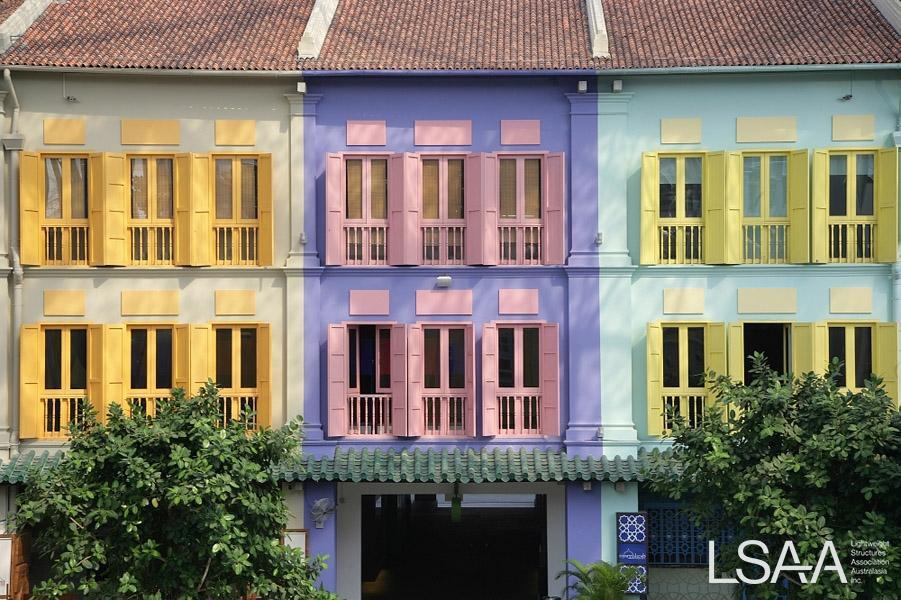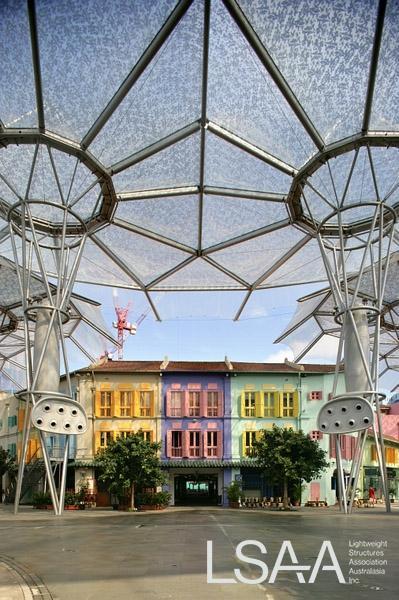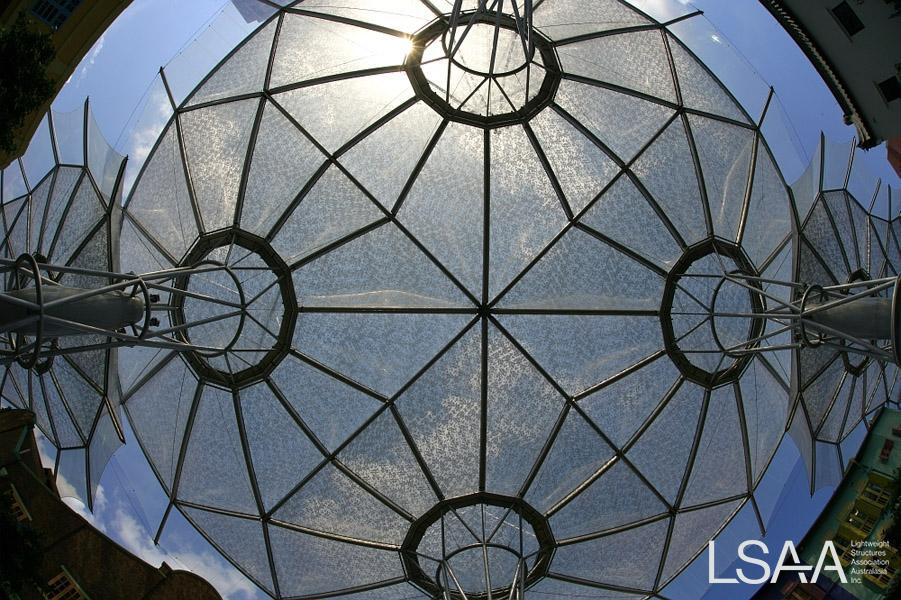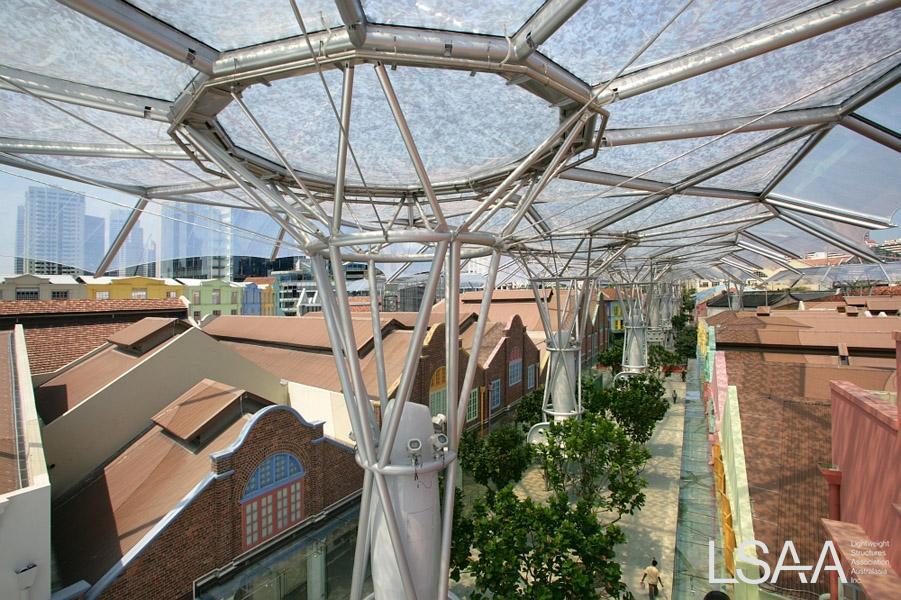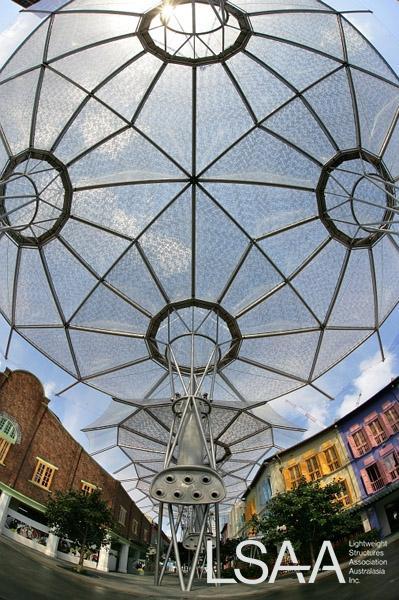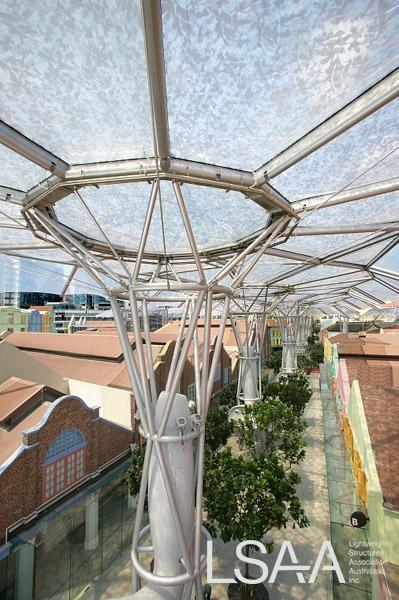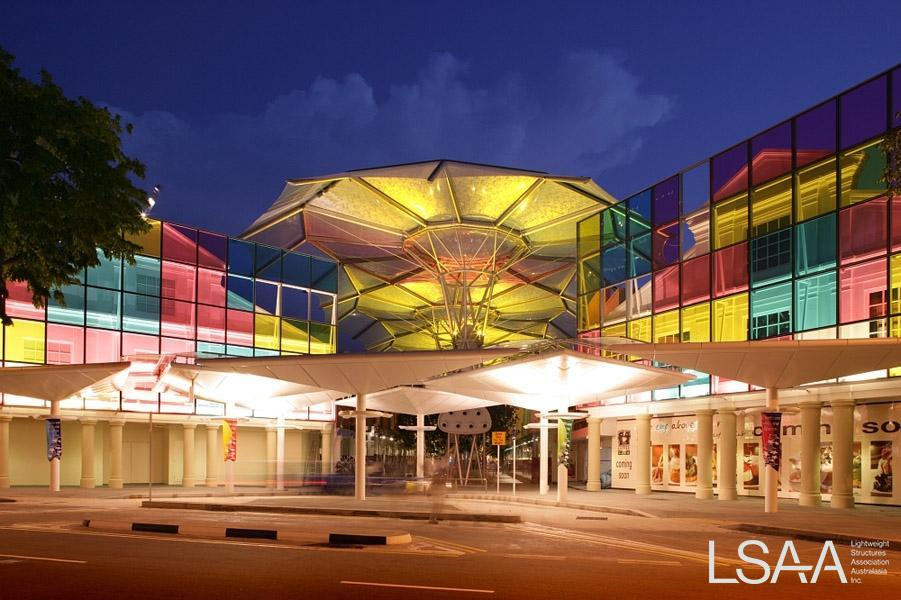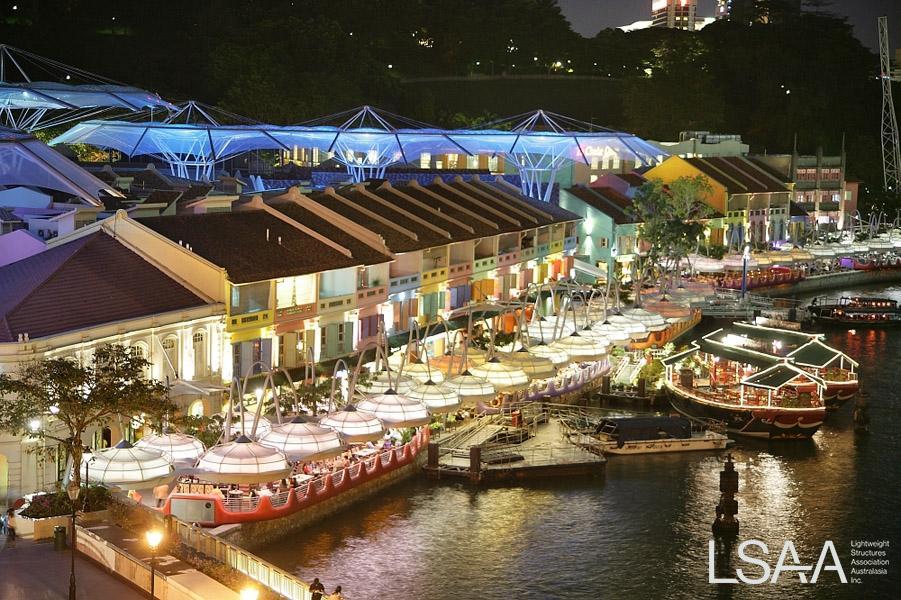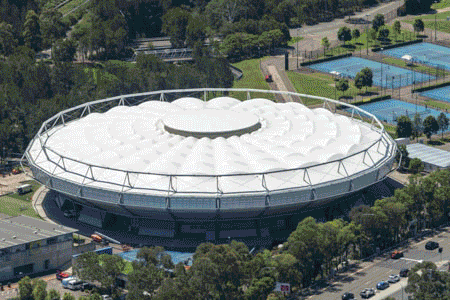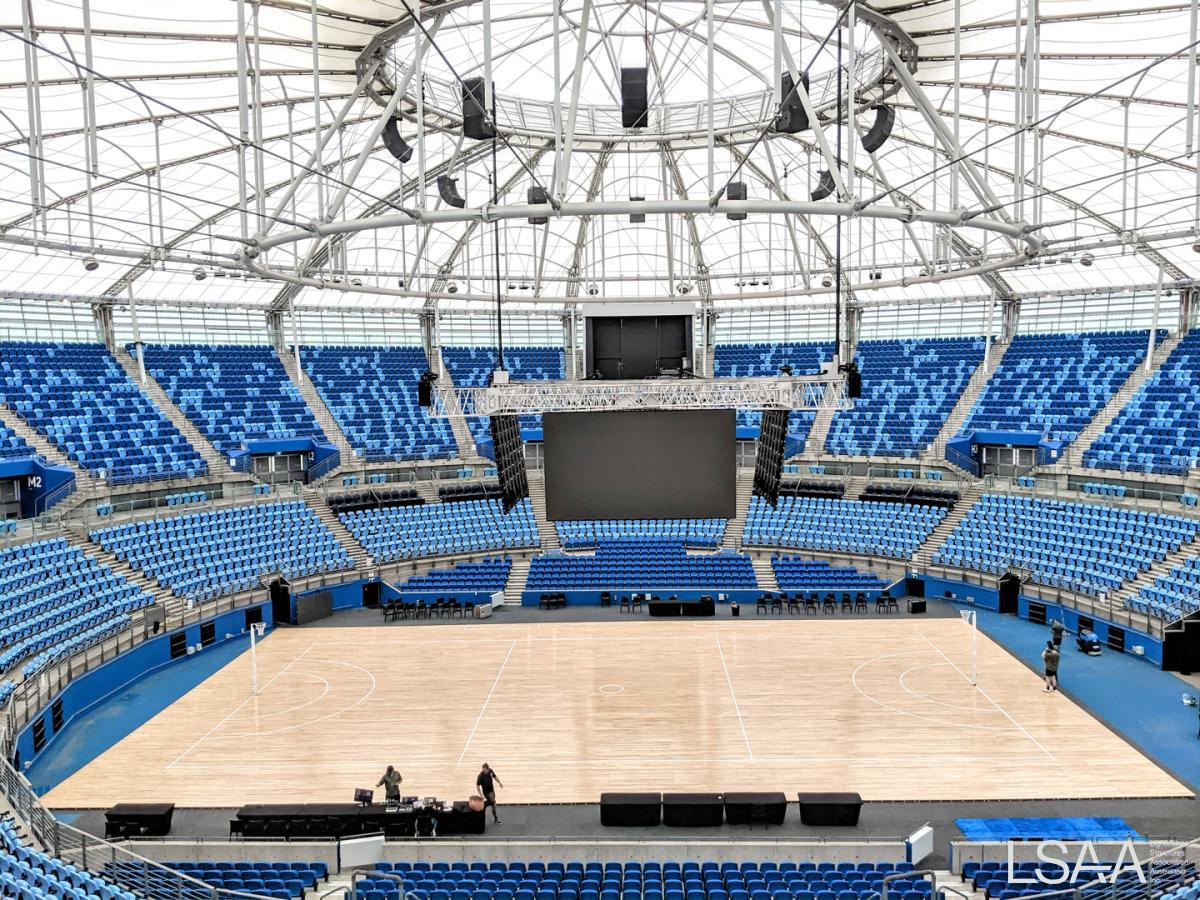Entry in the LSAA 2007 Design Awards (Cat 4, 4007) "Large Fabric Structures"
Entrant: Tensys
Location: Clarke Quay Redevelopment - Singapore Client: Capital and Commercial Ltd
Architect: SMC Alsops & RSP Architects Structural Engineer: Tensys
Specialist Consultant(s): Arup (Environmental) Builder: Kajima Overseas Asia Pte Ltd
Fabricator(s): Skyspan (Asia) Pvt Ltd – Riverside/Bluebell
canopies HIghtex GmbH – Street/Angel Canopies
Application and Function:
More than $50 million was spent upgrading the outdoor precinct to increase the shade and add to the comfort of visitors.
The Angel Structures are made from high performance thermoplastic film (ETFE). It is the first time this material has been used on such a large scale in Asia.
Around the river’s edge, striking bluebell canopies over lilypads revitalize the area, helping to create a new trend in outdoor dining and entertainment.
Description, Construction and Maintenance
SMC Alsop of UK were engaged by Capitaland to create a new Singaporean landmark with the redevelopment of Clarke Quay in Singapore. Local Singaporean architectural firm RSP Architects worked as the local documentation and project architect.
Clarke Quay is a riverside neighbourhood composed of 100 year old Chinese dockside shop fronts. The area has been redeveloped by Capitaland as a major tourist precinct with cafes, restaurants and nightclubs.
Along the Riverside is a strip of outdoor dining areas with Riverside Canopies. The dining areas take the form of Lilypads or raised seating areas covered with Bluebells which take the form of modular fabric canopies seemingly hanging from curved steel stems. There are covered links back to the shopfronts which can be raised drawbridge style to allow clearance for emergency vehicles along the riverfront.
The river course takes a right angle bend at Clarke Quay and so there are two streets running away from the river that meet at a crossroad in the middle of the district. Along these two streets and at the central plaza junction Alsop planned to have some tall Angel like structures with torsos standing in the streets and wings forming a canopy overhanging the street side buildings. The canopies are clad with ETFE pillow structures in the central regions and with single layer ETFE at the edges.
Tensys Engineers have assisted specialist contractors Rightech and Hightex with concept realization and structural design works for the Riverside and Street Canopies respectively at Clarke Quay.
Riverside/Bluebell Canopies
Singaporean specialist contractor Rightech was appointed to undertake these works. Tensys were appointed as specialist consultants to design these structures.
The Bluebells are dome shape structures that are fabricated with an exterior steel skeleton frame (a series of hoops and ribs). The frames are clad with tensioned PTFE glass fabric that is tensioned and attached to the interior of the frame. There are two different modules; a 4m and a 5m diameter dome that are seemingly suspended from curved steel masts.
The structures are challengingly intricate for PTFE structures with great accuracy required in detailing, patterning and fabrication.
The irregular interstices between the Bluebells are filled with a tensioned PTFE glass fabric panel ribbons that flow over arches linking the Bluebell frames. The ribbons also flow around trees growing up between Bluebells.
Again these structures are particularly challenging for PTFE structures also requiring very accurate control of setout and installation of Bluebells relative to each other.
The ribbon infills drain into gutters hidden at the perimeter of the Bluebell structures which then drain discretely into downpipes with the stem columns.
Providing weatherproof coverage from the Shopfront facades to the Riverside Canopies are a series of Link structures.
The Links structures are shallow PTFE cone structures with catenary cable edges with external steel frames attached to slab level at the facades (slab levels vary from one building to the next). The structures cantilever over the quayside street and overhang the Riverside Canopies. The Link structures can be raised by a retractable arm with the canopy pivoting at the building face to allow clearance for transit of emergency vehicles.
Tensys developed the architect’s concepts, bringing this interesting and very detailed group of interlinked structures to reality.
Street/Angel Canopies
These structures are the first use of ETFE in Asia (especially Singapore) and so there was much work required to satisfy regulatory authorities for it use on this project. Hightex and Tensys worked closely with the architects to get the concepts approved.
Specialist German international contractor Hightex were awarded the contract prior to selection of the main contractor and were novated to undertake the works. Tensys provided much technical and administrative support to help Hightex win this project.
Tensys also worked closely with the architect to develop a suitable rational geometry and structural system to support the canopy.
The structural system is a series of spiral truss columns that zigzag from side to side along each of the four legs along streets leading to the central crossroad area. The zigzag helps to provide some stability and also decreases the uniformity that the architect was trying to avoid.
At the head of each truss column is a series of twelve radial arms that crank in elevation and overhang the shopfront buildings along the sides of the streets. The arms are stayed with tension rods both above and below.
At the central cross road area there are four tall spiral truss columns interlinked with rod stayed radial arms that also crank and cantilever over the street canopies and corner shop front buildings.
Each of the four street canopies and central canopy are structurally independent of each other.
Each spiral truss column is capped with a large polygonal ETFE pillow and each of the radial arm frames are clad with ETFE pillow structures. The ETFE has an intricate organic frit pattern printed on its surface to provide some shading.
At the ends of each radial arm, the arm cranks down to provide some weather protection as the structures cantilever over underlying shop fronts. The cranked regions are clad with tensioned single layer ETFE skins.
There was detailed study of rain shadow patterns the ETFE pillow structures drain into box gutters at the head of each truss and thence into downpipes that are hidden inside structural members. A siphonic drainage system was adopted to minimise downpipe size.
Costs
Overall development of Clarke Quay cost SGD50 million. The projects for riverside/bluebell canopies and street/angel canopies cost SGD$12 million.


